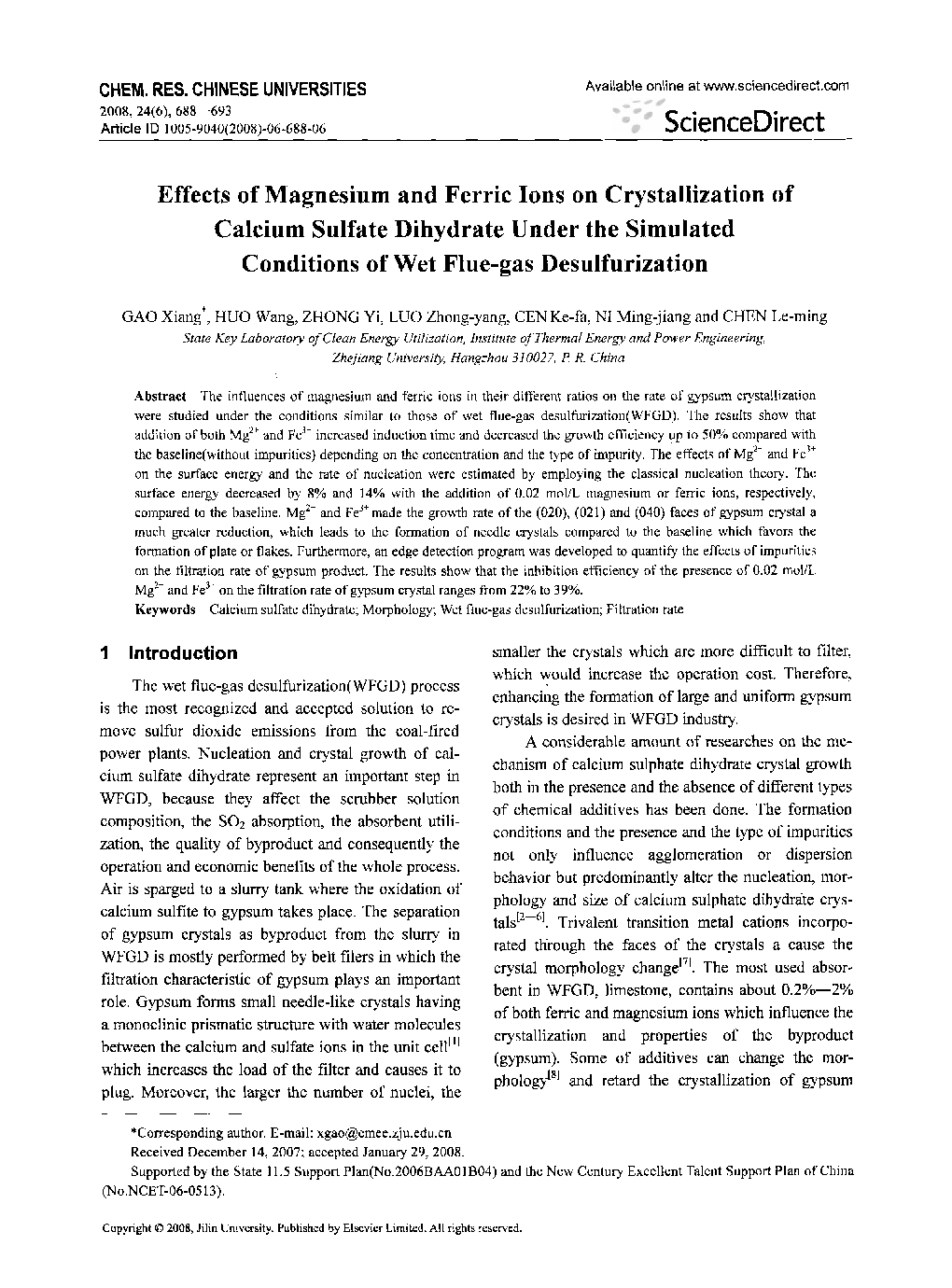| Article ID | Journal | Published Year | Pages | File Type |
|---|---|---|---|---|
| 1253147 | Chemical Research in Chinese Universities | 2008 | 6 Pages |
Abstract
The influences of magnesium and ferric ions in their different ratios on the rate of gypsum crystallization were studied under the conditions similar to those of wet flue-gas desulfurization(WFGD). The results show that addition of both Mg2+ and Fe3+ increased induction time and decreased the growth efficiency up to 50% compared with the baseline(without impurities) depending on the concentration and the type of impurity. The effects of Mg2+ and Fe3+ on the surface energy and the rate of nucleation were estimated by employing the classical nucleation theory. The surface energy decreased by 8% and 14% with the addition of 0.02 mol/L magnesium or ferric ions, respectively, compared to the baseline. Mg2+ and Fe3+ made the growth rate of the (020), (021) and (040) faces of gypsum crystal a much greater reduction, which leads to the formation of needle crystals compared to the baseline which favors the formation of plate or flakes. Furthermore, an edge detection program was developed to quantify the effects of impurities on the filtration rate of gypsum product. The results show that the inhibition efficiency of the presence of 0.02 mol/L Mg2+ and Fe3+ on the filtration rate of gypsum crystal ranges from 22% to 39%.
Related Topics
Physical Sciences and Engineering
Chemistry
Chemistry (General)
Authors
Xiang GAO, Wang HUO, Yi ZHONG, Zhong-yang LUO, Ke-fa CEN, Ming-jiang NI, Le-ming CHEN,
